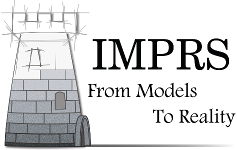Speaker
Description
Conventional materials have magnetoresistances $\Delta R/R=[R(B)-R(0)]/R(0)$ of a few percent, and the giant magnetoresistance of metal heterostructures approaches 30% for dc fields and at THz frequencies [1]. In contrast, in colossal magnetoresistance (CMR) oxides the resistance can change by orders of magnitude in a magnetic field. Here we report for the first time that colossal magnetoresistance persists to THz frequencies, with magnetoresistances above -99% at 1THz and at room temperature [2].
The THz magneto-optical conductivity of the colossal magnetoresistance compound $\mathrm{La}_{0.7}\mathrm{Sr}_{0.3}\mathrm{MnO}_3$ was investigated by THz time-domain spectroscopy. The response of vertically-aligned nanocolumns of $\mathrm{La}_{0.7}\mathrm{Sr}_{0.3}\mathrm{MnO}_3$ in a ZnO matrix [3] was compared with that of pure $\mathrm{La}_{0.7}\mathrm{Sr}_{0.3}\mathrm{MnO}_3$ thin films. This is particularly important as it allows the comparison of the intrinsic CMR effect, witnessed in pure single crystals around room temperature, with the extrinsic CMR effect, which is controlled by grain boundaries. Extrinsic CMR requires lower applied magnetic fields than the intrinsic effect, desirable for applications, but works below room temperature. Surprisingly, and in contrast to the dc CMR effect, we demonstrate that the THz magneto-optical response in $\mathrm{La}_{0.7}\mathrm{Sr}_{0.3}\mathrm{MnO}_3$ nanocolumns is an intrinsic effect. The THz CMR is large at the Curie temperature, when core Mn spins begin to align ferromagnetically, but decreases at lower temperatures.
At temperatures below the metal-insulator transition (when samples are metallic) the frequency-dependent conductivity is well described by the Drude model of free-carrier absorption. The application of a magnetic field perpendicular to the samples was found to enhance the Drude spectral weight, which can be understood within the double-exchange picture of charge transport in the CMR manganites. At the Curie temperature (300K) the THz conductivity of the nanocolumn film was dramatically enhanced by the application of a magnetic field, creating a non-Drude conductivity that increases with frequency. We discuss possible origins of this trend, including the prevalent picture in the literature of bipolarons destruction under a magnetic field into single polarons. The observed colossal THz magnetoresistance suggests that the magnetoresistance can be large for ac motion on nanometre length scales, even when the magnetoresistance is negligible on the macroscopic length scales probed by dc transport. Colossal THz magnetoresistance at THz frequencies may find use in active THz optical and electronic components controlled by magnetic fields.
References
[1] Z. Jin et al., Nat. Phys. 11, 761 (2015).
[2] J. Lloyd-Hughes et al., Nano Letters 17, 2506 (2017).
[3] A. Chen et al., Adv. Funct. Mater. 21, 2423 (2011).

